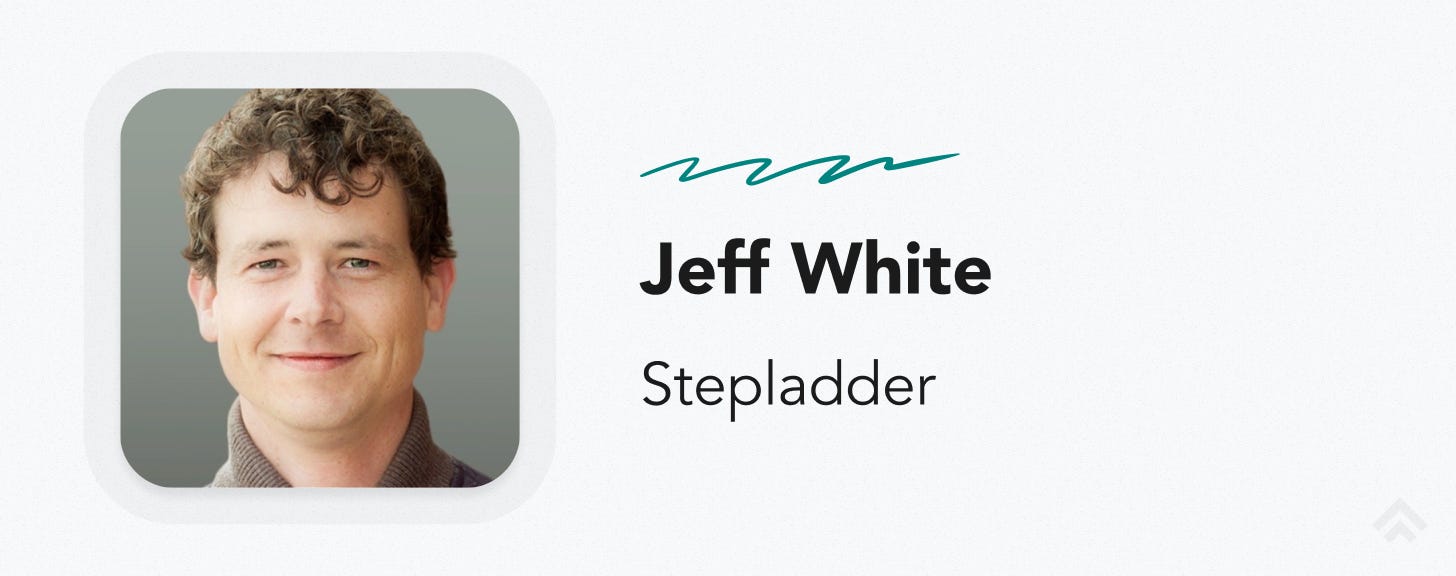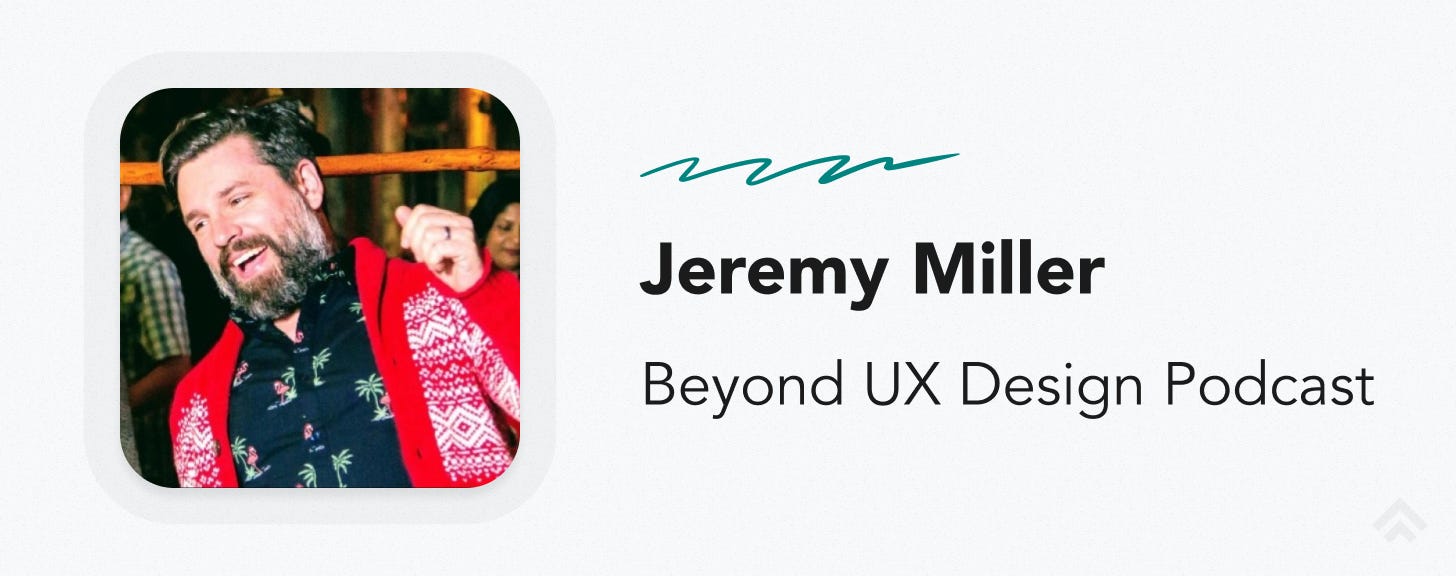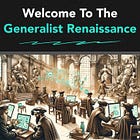From Designer to Business Visionary: 10 Entrepreneurs' Transformative Insights
Unveiling the lessons behind the creative employee to entrepreneur shift
Hello! I’m Pat and Better by Design is my newsletter sharing pragmatic insights for creative innovation through the lens of design. If you’re new here, join our growing tribe of design innovators!
The software design industry may be in flux, but I’m more bullish than ever on the value of design as a foundational modern business skill.
Whether you want to start an agency, create a product, build a media business, or more, design skills will serve you well.
However, venturing into entrepreneurship comes with a new set of challenges, not the least of which is the change in mindset required to operate well as an independent business owner.
Today, I’m excited to share the wisdom of ten entrepreneurs who have leveraged their design skill to great effect.
I asked each of them this question:
How has entrepreneurship changed your perception and practice of design?
Their experiences showcase a variety of paths for enterprising creatives and their wisdom serves as a guide for reframing limiting beliefs, embracing generalist skills, and forging ahead into the era of design entrepreneurship.
Until next time,
Pat 💚
I’m an accidental designer-turned-founder.
The biggest evolution for me was acknowledging the difference between value creation and performance theatre. If you’ve ever had to live hand-to-mouth while building a business, you become keenly aware of the worthiness of activities: from the battles you pick to the details you ignore.
In my startup, we opted for trade-offs that made our biggest evangelists happy (our smallest customer base). This kicked off a viral word-of-mouth campaign and afforded us the runway we needed to make it to our acquisition months later.
After the acquisition, I joined a team in Silicon Valley. They said and did all the “right” things: performed generative research, led with data, etc. But after a while, it didn’t result in marketplace wins and the company shrank. It just amounted to performance theatre, the kind that, ironically, would have killed my startup
Becoming an entrepreneur made me keenly aware of business goals and how design can lead to success or failure. I learned to pick my battles. There’s a limited amount of time and resources so I prioritize everything by desired outcome. The rest can be rejected, delegated, or put on a wait list.
Every part of a business is designed whether intentionally or not. As a small, bootstrapped business owner, this means I scale intentionally and use systems thinking to either fully automate or delegate standardized processes.
I think design is currently undervalued because many designers are brought in as an afterthought instead of as a critical part of the development process. If designers can plug into the entire operation of a business and bring value where it’s needed, they can take it to the next level. But they need to think about the outcome, not perfection, to get there.
The biggest shift for me has been the mindset towards generating revenue.
When you’re in-house as an employee it’s easy to get comfortable with wasted time: excessive meetings, focus on process, and time spent learning. None of those are bad, but if you over focus on them the business doesn’t grow.
As an entrepreneur, you cut 90% of the excess. You don’t have the luxury of wasted time. You spend most of your time shipping features, trying to make customers happy, and staying focused on the core ways design can financially serve the business.
This mindset shift has made me a stronger partner for co-founding digital tools as well as a stronger candidate for fractional product design roles.
Becoming an entrepreneur has broadened my perspective on design to include every aspect of the business.
Building your own business means you can focus on the experiences you deem worthy of investment. You define the priorities and make the decisions. While I’ll always push for great craft, the best experience doesn’t always get prioritized because you have to find a balance with other factors like revenue, impact, and effort. Designing in this context can be more holistic as you’re better equipped to connect the dots, make decisions, and ship.
Another thing I’ve noticed is that there’s a portion of the design industry that is super righteous. It tells everyone that there’s only one “correct” way to design and that anyone who doesn’t agree deserves to go to hell. That’s seriously f*d up. I was probably a part of this group early in my career, but now I’m more flexible because I understand the messiness of building things from scratch in the real world.
Being an entrepreneur has given me a comprehensive skill set beyond design. I think of my time as a startup CEO as my real-world MBA.
Years ago at my startup, Pinoccio, I designed a delightful experience before we found a strong product-market fit. While we had discovered a small niche of passionate customers, we had also taken venture capital where a small niche isn’t enough — we had to find a big market to scale into. We made the mistake of building a cool experience in search of a market and came up short. That failure stung, but it taught me a lot!
Now I’m bootstrapping something new and taking that lesson with me. I’m starting with customer discovery and I’m building in public — just by posting on LinkedIn. It’s helping me understand what my customers' pain points are and where I can bring value.
Becoming an entrepreneur helped me see the bigger picture that most design exists within — involving revenue, product, sales, marketing, and more. When you’re running a business and need to keep the lights on it forces you to think differently about everything, including design.
I started being a business person because I wanted more control of my time. Early in that journey, I was on a bike ride through Seattle on a sunny weekday morning and rode through the Google campus in Fremont. I noticed a bunch of full-time employees doing full-time employee things — rushing around, heads buried in phones, and looking a little stressed. I also noticed I was the opposite of that in that moment. That’s when I realized I was on the right path and never looked back.
Embracing entrepreneurship has meant that I no longer rely solely on my day job to pay my bills. I'm also not dependent on my employer to fulfill my creative needs as my side hustles give me the autonomy and creative freedom that I don't always get from a corporate job. This mindset shift has also meant that standard corporate issues – like projects being shut down or organizational changes – don't bother me like they used to.
When you look at the business models of companies like Apple or Google, they’re trying to diversify with new income streams so that they’re not relying on a single source like iPhone sales or ad revenue. Similarly, as a designer turned creative business person I can diversify by creating new income streams or building new distribution channels around the foundation of my day job.
Being faced with what it means to start, sustain, and grow a business is a real test to your ego as a designer.
It’s tough to confront the fact that things you used to argue were critical to having a great product often result in low ROI when starting. And it’s even tougher when you see badly-designed products doing great.
Operating as an entrepreneur taught me to love delivering things that impact the business, not just get likes on Dribbble. For example, I used to dread creating pitch decks for clients because I saw it as something below my so-called "talent." But once I had to start creating those for my own business, I started loving it. The challenge of showing the right information, generating an emotional connection, and nailing pricing became a thrill. Even to this day, it’s one of my favourite things to do when starting a new project.
I used to be afraid of trying new skills because I thought I needed to master being a designer before moving on to anything else.
But the reality is that having different experiences in new areas has a compounding effect. Those experiences build on each other until you one day look up and discover yourself in a new career that is still somehow authentically you.
Becoming an entrepreneur has allowed me to experience the benefits of applying consistent design principles to my business and growth firsthand.
Designers are often told to avoid perfection but that's a lot easier said than done.
As a first-time solopreneur, I find myself grappling with this issue often: how do I decide when to release my products? Do I launch early to get market share or refine my idea for quality? It's not really about meeting deadlines since they're usually just arbitrary dates, it's more personal: it’s my baby at stake!
The hard part is balancing the urgency to ship a product against the desire to achieve a certain standard of perfection. I call it the "Solopreneur's Paradox." It sums up the unique predicament of solopreneurs who need to find the sweet spot between quick market entry and maintaining their personal quality standards.
If you got a little value from this post, consider subscribing, sharing, or following me on X/Twitter or LinkedIn.
















I really enjoyed this issue, Pat!
What about you? I know you’ve shared about your journey before but I was expecting some closing remarks from your own experience too.
Also, I’d love to hear more about Jeremy’s Solopreneur's Paradox and how he’s resolving it.
Really enjoyed the insight of this post! As a media professional who has been working on becoming an entrepreneur since graduating college but still struggling to establish a business plan that will bring revenue, I often consider myself a designer than a content creator because my passion to serve lies more in helping create a vision for other brands and businesses than becoming an influencer-type creator who relies heavily on marketing other’s products.
After reading this, I feel so inspired and enlightened by the wisdom shared by each entrepreneur about their journey so far and trusting in their skills and knowledge to sustain their businesses! Thank you so much Pat for a wonderful post!